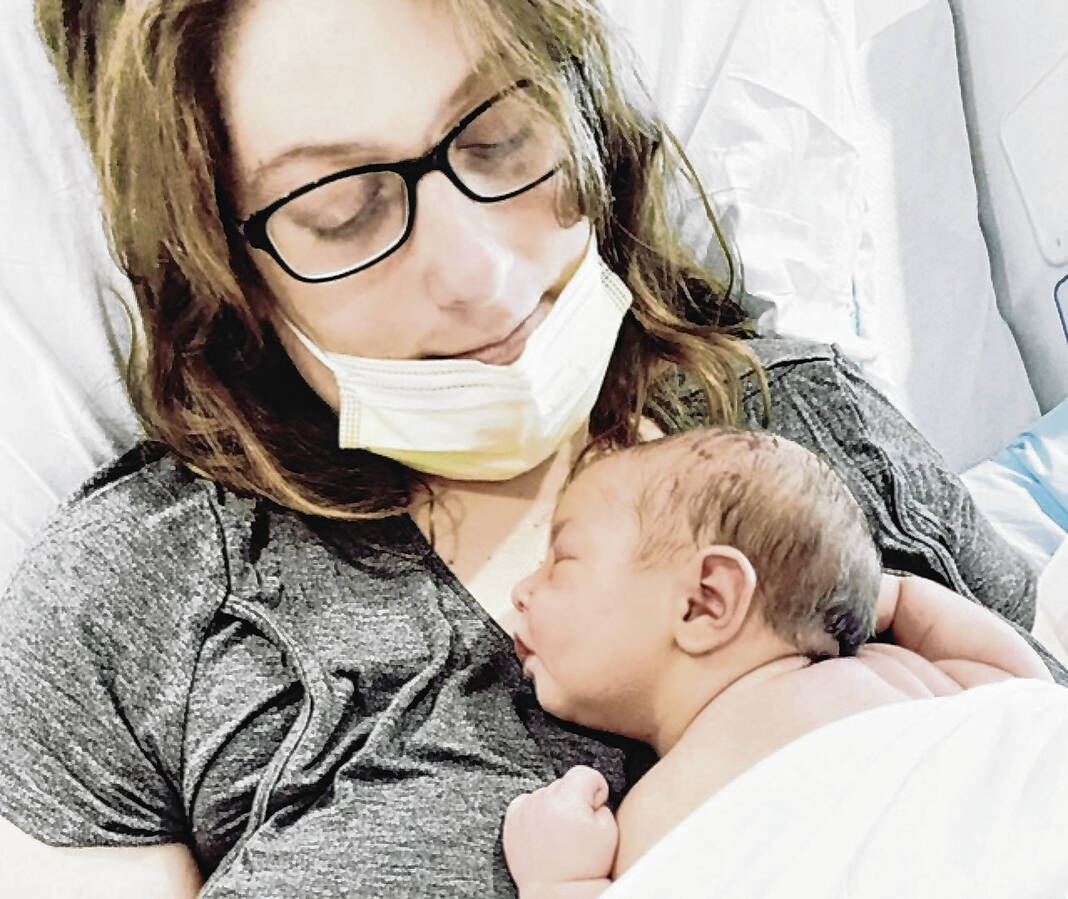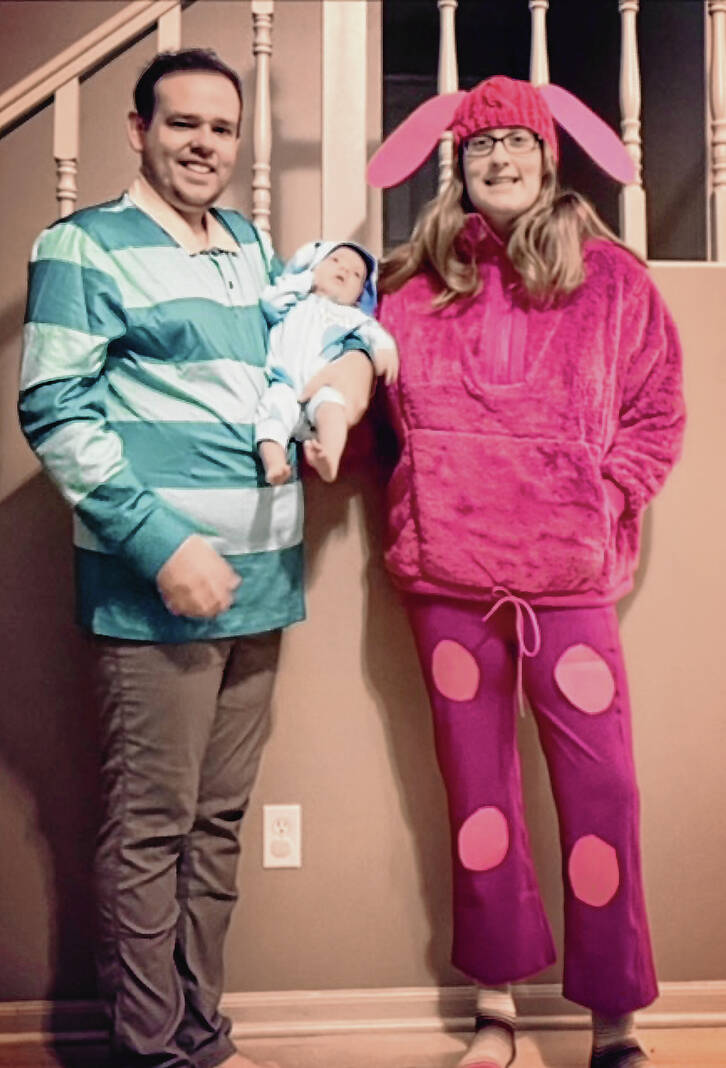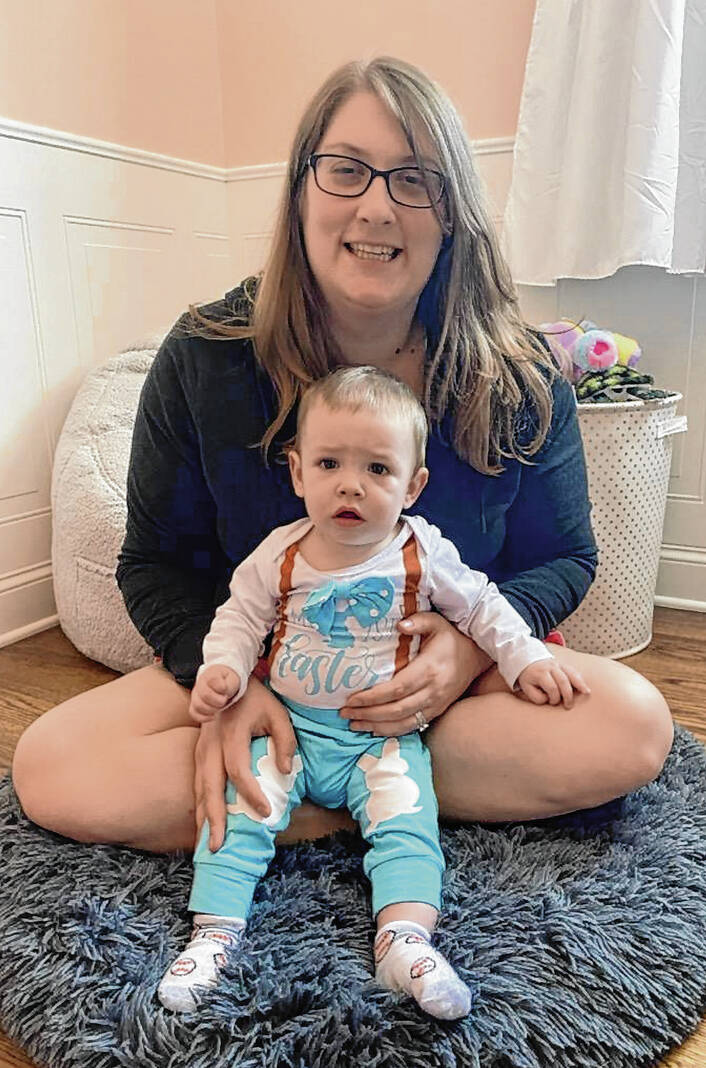The pain felt like her stomach was being ripped apart.
Lyndsay Lime had dealt with pelvic aches, severe cramps and heavy menstrual bleeding for years. Though the southside Indianapolis resident suspected something was wrong, she would continually doubt how severe the problem really was. Friends and family suggested it was normal. Not even her doctor seemed concerned.
“I’m really bad about downplaying things. In the moment, I realize it’s bad, but when I’m with the doctor, I get shy,” she said. “I figured other people had worse things. I didn’t advocate for myself.”
Not until one day in 2021, when the pain was so severe Lime fell to the floor, did she realize the issue was too serious to ignore any longer.
“It was so much pain in my stomach. At that moment, I had to talk to someone about this,” she said.
After consulting with an OB-GYN, Lime learned the truth — she had endometriosis. The condition causes tissue similar to the lining of the uterus to develop around the pelvis. As it builds up, it can cause increasing pain, as well as fertility problems and difficulties with bowel movements.
And Lime discovered she’s not alone. Endometriosis impacts 190 million women and girls of reproductive age across the globe, according to the World Health Organization.
She wants to share her experience to let other women know what they are experiencing may not just be “normal woman problems,” she said. If they realize they may be affected by endometriosis as well, they may be able to change their lives too.
“I wish I had heard a story like this when I was going through all of my symptoms,” she said. “This is a topic that can be very awkward to talk about with people. A lot of people have heard the word ‘endometriosis,’ but they don’t really know what it is or the pain it can cause.”
Getting treatment for endometriosis did not simply bring Lime’s pain under control. For years, she had been doubtful she could have children. Intercourse was too painful, and though her partner, Corey, was understanding, a baby did not seem possible.
But one month after having surgery to address the condition, she learned she was pregnant.
“Even before getting diagnosed with endometriosis, I always wanted to have children, but I was very scared,” she said. “I knew this surgery was something I would have to look into if I wanted to have children.”
Now nearly 1 year old, Declan is a bubbly, curious little boy. Every time Lime looks at him, she’s reminded how important it was for her to ask questions.
“He’s amazing,” she said.
Lime’s journey with endometriosis first started in 2012, when she started to notice changes with her body. She was having heavier periods, and some bleeding after intercourse.
She discussed her concerns up to her mother, who insisted those issues were normal.
“So at the time, I just kind of ignored things,” she said.
The symptoms intensified over the next three years. Lime suffered more pelvic pain; her body felt off. She found a new primary care physician with Indiana University Health, but still felt shy about bringing it up to her.
“It’s uncomfortable to talk about. And people I told made it sound like I was just experiencing a little bit of cramping. I felt like it was downplayed, so I downplayed it,” she said.
What forced her to change her mind was the incident in 2021, where the pain became too great to ignore. Lime finally told her physician about her symptoms, and they decided to investigate it further. Her doctor said the symptoms fit the criteria of endometriosis, but because the condition is notoriously tricky to pinpoint, they’d need to investigate further.
Lime was recommended to Dr. Alissa Conklin, a medical director and OB-GYN with the Coleman Center at IU Health University Hospital. An ultrasound showed a confluence of tissue in her pelvic region, but still, Conklin was unsure if it was endometriosis.
“It’s not a very black-and-white process. Sometimes it can be very difficult to determine the cause,” Conklin said. “In (Lyndsay’s) case, she came to me with some very specific symptoms.”
They could pursue additional scans, but Conklin warned — endometriosis only shows up on MRIs if it has reached Stage 3, or grown to a moderate size. If the scan presented more evidence for the condition, they could do a laproscopy. Surgeons could use a small camera through a tiny incision in the abdomen to get a more clear picture of the body.
“The only way to truly diagnosis endometriosis is through surgery,” Conklin said.
Each step provided more evidence for the condition, and Lime agreed to a laproscopy in November 2021. She didn’t know before the procedure how surgeons would proceed. If they found no endometriosis, the appointment would last only minutes, but if they found the disease, the examination and surgery to remove scar tissue could take hours.
When Lime woke up, her husband delivered the news.
“I’ll never forget when he came in, because he said, ‘They got it.’ And I just bawled,” she said. “I was so fearful they’d say they didn’t see anything, that they didn’t know what was wrong.”
Lime’s pelvic region had been covered in scar tissue caused by the endometriosis, Conklin told her. They conducted a two-hour surgery to remove the scar tissue, and set up an appointment for one month later to discuss options to manage her endometriosis.
At that appointment, Lime learned she was pregnant with Declan.
“For the whole pregnancy, I didn’t have any problems with endometriosis or any of those symptoms,” she said. “I had all of the fun pregnancy symptoms, but none of the pain or other things I was experiencing before.”
There is no cure for endometriosis; the tissue will continue to grow throughout Lime’s life. But she is able to manage it with Nexplanon, a form of birth control.
Since going on the medication, Lime has had no other issues. Conklin continues to monitor it, and leaves the options of staying on birth control or trying something else in Lime’s hands.
With the uncertainty of her past health issues behind her, she wants to use her experience for others now.
“The more we talk about it, the more people can advocate for themselves,” she said.
AT A GLANCE
Endometriosis
What is it: A disease in which tissue similar to the lining of the uterus grows outside the uterus.
What are the symptoms: Severe, life-impacting pain during periods, sexual intercourse, bowel movements and/or urination, chronic pelvic pain, abdominal bloating, nausea, fatigue, and sometimes depression, anxiety, and infertility.
What are the treatments: There is no cure for endometriosis, but it can be managed with medications, including non-steroidal anti-inflammatory drugs painkillers like ibuprofen and naproxen. Hormonal medicines like GnRH-analogues and birth control methods can also help control pain.
Information: World Health Organization












